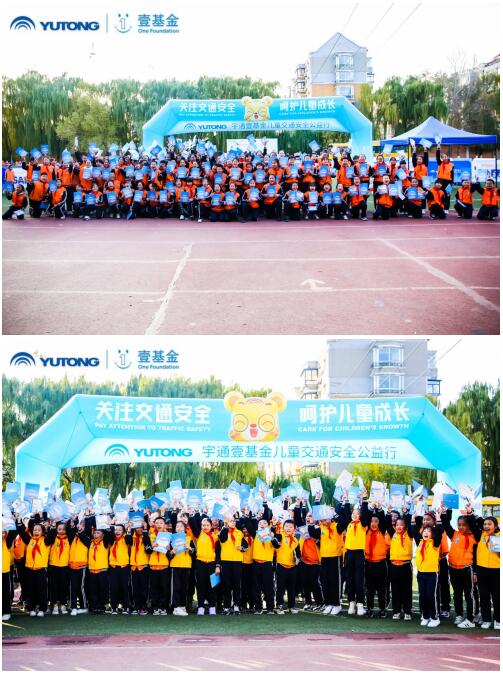高血压引起肾脏损害的中医治疗
Treatment of Renal Damage Caused by Hypertension by Traditional Chinese Medicine

张永发 中医主任医师
Zhang YongFa ,A chief physician of traditional Chinese Medicine
泰国中医科学院付院长
Vice president of Thailand Academy of Chinese Medical Science
泰国桐发中医院 院长
President of Thailand Tongfa Hospital of Traditional Chinese Medicine
[摘要] 本文介绍因高血压引起的肾脏损害的治疗、预防併发症等。重点介绍益气温阳、补肾降浊,活血化瘀法在肾损害治疗中优越性,是临床上值得推广的治疗方法之一。Zhang YongFa ,A chief physician of traditional Chinese Medicine
泰国中医科学院付院长
Vice president of Thailand Academy of Chinese Medical Science
泰国桐发中医院 院长
President of Thailand Tongfa Hospital of Traditional Chinese Medicine
[关键词]: 肾脏损害,并发症,尿毒症、肾功能衰竭。
[Abstract] This paper focuses on the superiority of invigorating qi and warming yang, replenishing the kidney and reducing turbidity, and promoting blood circulation and removing blood stasis therapy in the treatment of renal damage. It is one of the treatment methods worth popularizing in clinic.
[Key words] Renal damage; Uremia; Anemia; renal failure.
1. 中医对高血压引起肾脏损害的认识与治疗
1. The Understanding and Treatment of Hypertension-induced Renal Damage in TCM.
1.1 中医对高血压引起肾脏损害的认识:
1.1. The Understanding of Hypertension-induced Renal Damage in TCM
长期高血压对肾脏的损害导致慢性肾衰竭属于中医"溺毒""虚劳""关格""水肿病""正水""阴水"等范畴。其病因病机为本虚标实,治疗多采用扶正与袪邪兼顾,标本同治,当代医家,提倡治疗肾损害重视阳气,尤其近年来温阳法在慢性肾衰竭治疗中的应用,日益受到重视。首先,要采用中西医结合治疗,将患者的血压控制在正常的水平,最理想的血压是:收缩压不要超过140 mmHg, 舒张压不要超过90 mmHg,以130/75 mmHg 最为合适,并稳定血压在上述的水平,以确保肾脏供血,改善肾脏微循环,使肾脏的细小动脉不致硬化,且能解除肾小球动脉痉挛,增加肾血流量,保护肾的正常功能。
In traditional Chinese medicine (TCM), chronic kidney failure resulting from the renal damage induced by longstanding hypertension is classified into such categories as toxin excess, consumptive disease, obstruction and rejection, edema disease, typical anasarca, and Yin edema. In response to the pathogenesis of asthenia in origin and excess in superficiality, the simultaneous treatment of root causes and subordinate symptoms is often adopted for patients by strengthening their body resistance and eliminating pathogens. The contemporary TCM practitioners attach great importance to Yang Qi in the treatment of renal damage. Especially in recent years, the Yang-warming method is attracting increasing attention in the management of chronic renal failure. First of all, TCM should be combined with the Western medicine to adjust the patient's blood pressure to a normal level. The recommended systolic blood pressure should be under 140 mmHg and the diastolic blood pressure under 90 mmHg, where 130/75 mmHg would be an ideal. The next step is to maintain the blood pressure level adjusted above to ensure renal blood supply and improve renal microcirculation, which can not only avoid the occurrence of arteriolosclerosis but also relieve glomerular artery spasm and enhance renal blood flow, thus guaranteeing the normal function of the kidneys.

高血压引起肾脏损害临床上以水肿、蛋白尿,高血压为主要特征,多因高血压多年慢慢引起肾脏的损害,三焦气化失常最后进入尿毒症,致肾功能衰竭。贫血, Scr、 BUN升高,肾少球滤过率(eGFR)降低,蛋白尿,血压升高难以控制为临床上常见的指征。最后导致全身浮肿、尿少、恶心呕吐,身倦乏力、 心悸气短、面色苍黄、嗜睡等尿毒症表现。中医认为本病为本虚标实之证,本虚多为脾肾气虚 、气阴两虚;标实多为血瘀,湿热,湿浊。其中脾肾气虚多夹湿浊,气阴两虚多夹湿热,而脏络瘀阻贯穿始终;治以健脾益气,燥湿泄浊活血法,益气养阴,清热利湿活血法,温阳化瘀法等,可有效改善慢性肾衰竭患者肾功能水平,降低Sc r 、 BuN水平,且有改善慢性肾衰竭患者血液流变学指标,升高血红蛋白等疗效。
Clinically manifested with edema, proteinuria, and hypertension, hypertension-induced renal damage is chronically caused by longstanding hypertension; the abnormal Qi transformation in the Triple Energizer further induces uremia, which finally leads to renal failure. The common clinical indications include anemia, increased Scr and BUN, decreased glomerular filtration rate (eGFR), proteinuria, as well as increased and uncontrollable blood pressure, which will finally result in such uremic manifestations as systemic edema, oliguria, nausea and vomiting, physical fatigue, palpitation, shortness of breath, sallow complexion and lethargy. In TCM, this condition is defined as a syndrome with asthenia in origin and excess in superficiality, where the former refers to the Qi deficiency of spleen and kidneys and the deficiency of Qi and Yin, while the later is associated with blood stasis, damp-heat and damp-turbidity. Of them, the Qi deficiency of spleen and kidneys is often complicated with damp-turbidity and the deficiency of Qi and Yin with damp-heat; viscera obstruction and blood stasis can be observed throughout the disease course. The treatment involves several options, including invigorating spleen and supplementing Qi, eliminating dampness and purging turbidity to activate blood, tonifying Qi and nourishing Yin, clearing heat and promoting diuresis to activate blood, warming Yang and removing blood stasis, etc. Apart from effectively ameliorating the renal function of patients with chronic renal failure and decreasing the levels of Scr and BUN, these therapies can also improve the hemorheological indexes and increase hemoglobin.

张永发主任医师、陈悦彬中医硕士、沈鹏主任医师、杨秀专中医师,在心血管病研究所学术会议上合影。
1.2 高血压引起肾脏损害的中医治疗:
1.2. The Treatment of Hypertension-induced Renal Damage in TCM
根据高血压引起肾脏损害的临床表现,按照中医理论辩证施治的原则,结合临床经验将高血压引起肾脏损害分为4型 :
Based on the clinical manifestations, hypertension-induced renal damage was divided into 4 types in this paper by reference to the principle of syndrome differentiation treatment in TCM:
㈠肺失宣降 脾运不健
I. Lungs lose its governance of dispersion, purification and descending, and the spleen suffers dysfunction
患者多有高血压病史,常反复出现蛋白尿 ,伴颜面浮肿,时轻时重,腹胀便溏,食纳不佳,胸闷气憋,偶咳嗽喘促,畏寒发热, 咽痛口渴,尿少色黄,舌苔薄白,脉多滑数。血尿素氮 (BUN), 肌酐(Sc r)增高,肾小球滤过率降低。
In this group of patients who often reported a history of hypertension, the manifestations include recurrent proteinuria which is accompanied by inconstant facial edema, abdominal distension and loose stools, poor appetite, chest distress and labored breathing, occasional coughing and shortness of breath, cold intolerance and fever, throat pain and thirst, oliguria with yellow color, thin and white tongue fur, smooth and rapid pulse, increased BUN and Scr, and reduced glomerular filtration rate.
治法:宣肺利气,运脾消肿。
Treatment: Dispersing the lungs to reinforce Qi and activating the spleen to relieve swelling
处方:麻黄6 g苍术10 g 桔梗10 g 杏仁 10g 连翘10g 赤小豆15 g 茅根30g 生姜三片 猫须草15 g 茯苓15 g猪苓15 g甘草3 g
Prescription: Ephedra, 6g; Atractylodes rhizome, 10g; Platycodon root, 10g; almond, 10g; Fructus forsythiae, 10g; Phaseolus calcaratus, 15g; Couch grass root, 30g; Raw ginger, 3 slices; Spicate clerodendranthus, 15g; Poria, 15g; Polyporus umbellatus, 15g; Licorice root, 3g.
注:三焦气化失常,又感风邪,风为阳邪,其性上行,风水相搏,故颜面浮肿,风水壅遏肌表,卫气不得宣畅,肺气不利,故见畏寒发热,咳嗽喘促,胸闷气憋。气机不畅,郁而化热,毒热充斥,故咽痛口渴,尿少色黄。食纳不佳,腹胀便溏,是脾运不健之证。舌苔薄白,脉滑数为风水之象。
Note: For this category, the abnormal Qi transformation in the Triple Energizer is complicated with the invasion of pathogenic wind. This wind, with the attribute of Yang, will ascend, and its conflict with water leads to facial edema. The obstructed fleshy exterior by wind edema further disable the defensive Qi and impede the lung Qi, thus resulting in cold intolerance and fever, coughing and shortness of breath, and chest distress and labored breathing. When the Qi movement is obstructed, toxic heat will accumulate and its excessive existence causes throat pain and thirst as well as oliguria with yellow color. Poor appetite, abdominal distension and loose stools are the symptoms of spleen dysfunction. Thin and white tongue fur together with smooth and rapid pulse imply the existence of wind edema.
方中麻黄,生姜,杏仁清热宣肺,甘草、苍术运化脾湿,连翹,赤小豆利湿解毒。桔梗与甘草利咽止痛,茅根清热凉血,利水消肿。肾功能不全就能逐步改善。
In the prescription, Ephedra, ginger and almond can clear heat and disperse lungs; Licorice root and Atractylodes rhizome can transport and transform dampness in the spleen; Fructus forsythiae and Phaseolus calcaratus function by inducing diuresis to remove toxicity; Platycodon root and Licorice root can relieve sore-throat and pain, while couch grass root can remove heat to cool blood and induce diuresis to alleviate edema. With their synergistic action, renal insufficiency will be gradually improved.
㈡脾肾两虚 水湿泛滥 精气外泄
II. Spleen and kidneys deficiency leads to excessive damp and vital essence leakage.
患者高血压多年未得到控制,面色㿠白或苍黄,全身浮肿腹部膨隆如鼓,肢凉怕冷,食欲不振,大便溏次频,小便少,尿有蛋白,腰酸膝软,舌质淡而胖大,边有齿痕,舌苔薄白,脉沉细或沉缓。血尿素氮、肌酐增高。血压常升高不降。偶觉胸闷、心悸,虚弱乏力。
For this group of patients, the hypertension remains uncontrollable for many years. The manifestations include pale or sallow complexion, systemic edema with drum-shaped abdominal bulge, cold limbs and cold intolerance, poor appetite, high frequency of defecation with loose texture, oliguria, proteinuria, aching lumbus and limp knees, pale and fat tongue body with teeth marks on the edges, thin and white tongue fur, deep and thready pulse or deep and moderate pulse, increased BUN and Scr, increased and uncontrollable blood pressure, occasional chest distress and palpitation, as well as weakness and lassitude.
治法:温脾固肾助阳,行气利水。
Treatment: Warming the spleen and reinforcing the kidneys to support Yang, promote the circulation of Qi and induce diuresis.
处方: 生黄芪15 g 党参10g 白术10 g 茯苓30 g 炮附子12 g 干姜12g 厚朴10g木香6 g 大腹皮10g 猫须草10g 车前子25g猪苓15 g 泽泻10 g 肉桂3g 鹿茸6g 甘草3g
Prescription: Astragalus root, 15g; Radix codonopsis, 10g; Atractylodes macrocephala Koidz, 10g; Poria, 30g; Aconitum carmichaeli (Prepared), 12g; Dried ginger, 12g; Cortex magnoliae officinalis, 10g; Radix aucklandiae, 6g; Pericarpium arecae, 10g; Spicate clerodendranthus, 10g; Semen plantaginis, 25g; Polyporus umbellatus, 15g; Rhizoma alismatis, 10g; Cinnamon bark, 3g; velvet deer antler, 6g; Licorice root, 3g.
注:精气源于水谷,为脾所生化,藏于肾,又靠脾肾之功能供养于全身。若脾肾两虚,体无精养,阳气虚弱,气不化水,水邪泛滥,则全身浮肿。肾阳不足则腰酸膝软,小便少,色清白,尿有蛋白。面色萎黄,怕冷,食欲不振,大便溏次频;均为阴阳两虚,精气不足之证。舌质淡,体胖大,边有齿痕,舌苔薄白,肮沉细或沉缓,又为阳虚湿停之象。
Note: Originating from water and grain, vital essence is transported and transformed by the spleen and stored in the kidneys; the normal function of the spleen and kidneys guarantees its supply to the whole body. Under the condition of spleen and kidneys deficiency, the supplied vital essence will be insufficient, the Yang Qi be week and the water cannot be transformed by Qi, leading the excessive damp and systematic edema. Insufficiency of the kidney Yang can cause aching lumbus and limp knees, oliguria with clear color, and proteinuria. Sallow complexion, cold intolerance, poor appetite, and high frequency of defecation with loose texture are all the symptoms for Yin and Yang deficiency as well as insufficient vital essence. Pale and fat tongue body with teeth marks on the edges, thin and white tongue fur, deep and thready pulse or deep and moderate pulse indicate Yang deficiency and damp retention.
方中党参,白术、干姜温运脾阳,附子温肾补脾,黄芪、厚朴、木香,茯苓大腹皮、车前子行气导水,如此则脾肾阳复,气行湿化,猪苓、泽泻助以利水消肿,水肿自消,肉桂助阳、鹿茸固肾养精,食纳渐佳。怕冷、腰酸疲乏、尿少,便溏诸证则逐步改善。
In the prescription, Radix codonopsis, Atractylodes macrocephala Koidz and dried ginger can warm and transport the spleen Yang; Aconitum carmichaeli can warm the kidneys and nourish the spleen; Astragalus root, Cortex magnoliae officinalis, Radix aucklandiae, Poria, Pericarpium arecae and Semen plantaginis can promote the circulation of Qi to guide water, thereby restoring Yang in the spleen and kidneys and removing damp under the lead of Qi; Polyporus umbellatus and Rhizoma alismatis help to induce diuresis for removing edema; cinnamon bark and velvet deer antler can reinforce the kidneys and nourish the vital essence, further improving food intake. With their synergistic action, such symptoms as cold intolerance, aching lumbus, oliguria and loose stools will also be gradually alleviated.
㈢ 肝脾不足 精血亏虚
III. Liver and spleen deficiency leads to blood and vital essence asthenia.
患者有多年高血压病史,血压常不稳定, 伴胸闷、心悸,纳呆,面色萎黄,神疲不支,全身浮肿,伴腹水,肢体麻木,尿量极少,舌质淡且体胖大,边有齿痕,脉沉细。血尿素氮、肌酐增高。
In this group of patients who reported a history of hypertension for years and unstable blood pressure, the accompanied symptoms include chest distress, palpitation, anorexia, sallow complexion, lassitude, systemic edema with ascites, numbness of the limbs, severe oliguria, pale and fat tongue body with teeth marks on the edges, deep and thready pulse, and increased BUN and Scr.
治法 : 补益肝脾,填精养血。
Treatment: Invigorating the liver and spleen to replenish vital essence and nourish blood.
处方:生黄芪30 g 当归6 g 熟地10g 白芍10 g 党参10 g 白术10 g 茯苓15 g 肉桂3 g 鹿茸6 g 鹿衔草10g 猫须草10 g 车前子15 g 猪苓10g炙甘草6 g
Prescription: Astragalus root, 30g; Angelica sinensis, 6g; Rehmannia glutinosa, 10g; Radix paeoniae Alba, 10g; Radix codonopsis, 10g; Atractylodes macrocephala Koidz, 10g; Poria, 15g; Cinnamon bark, 3g; velvet deer antler, 6g; Chinese Pyrola herb, 10g; Spicate clerodendranthus, 10g; Semen plantaginis, 15g; Polyporus umbellatus, 10g; Prepared Licorice root, 6g.
注:脾主运化,脾虚不运,水湿停留,气机 不畅,气滞中阻,故身重水肿,腹水, 尿量极少,血压波动不稳,全身㿠白光亮.面色无华。脾为化生精微之源,肝为藏血之脏,如肝脾虚弱,精血来源不足,肝无藏血,周身失养则面色萎黄.疲乏,贫血,尿少,全身浮肿。方用补气补血的黄芪、当归、填补精血的鹿茸,健脾益气 的参苓术草,利水消肿的车前子、猪苓等,标本兼治。
Note: The spleen governs transportation and transformation, so its dysfunction will lead to damp retention, obstructed Qi movement and Qi stagnation, thereby resulting in somatic heaviness and edema, ascites, severe oliguria, unstable blood pressure, whitened and lightened systematic skin, and lusterless complexion. The spleen acts as the source for the nutritious essence, and the liver functions as the organ breeding blood. Insufficiency of the liver and spleen will decline the generation of vital essence and lessen the blood produced by liver. As a result, the hindered supply to the whole body will cause sallow complexion, fatigue, anemia, oliguria, and systematic edema. This prescription includes Astragalus root and Angelica sinensis that aim to benefit Qi and blood; velvet deer antler for replenishing vital essence and blood; Radix codonopsis, Poria, Atractylodes macrocephala Koidz and Licorice root that can invigorate the spleen and supplement Qi; and Semen plantaginis and Polyporus umbellatus for inducing diuresis to alleviate edema. Therefore, this prescription can address both symptoms and root causes.
(四)肝肾阴虚 肝阳上亢
IV. Yin deficiency of the liver and kidneys induces hyperactivity of the liver Yang.
IV. Yin deficiency of the liver and kidneys induces hyperactivity of the liver Yang.
患者长期高血压难以控制,血压常高居不下,常于160 /1 oo mm Hg 以上,此时患者常伴有高血脂、高血糖,高尿酸,血液粘稠度增高,肾脏供血明显不足,肾功能不全临床各项生化指标均增高。可出现头晕头痛,视物模糊,耳鸣,五心烦热,口干欲饮,夜寐不安,其则恶心呕吐,腰酸腿软乏力,舌质红苔白,脉弦细数。
This group of patients are affected by longstanding and uncontrollable hypertension, which keeps at a high level of above 160/100 mmHg. The condition is often complicated with hyperlipidemia, hyperglycemia, hyperuricuria, increased blood viscosity, obviously insufficient renal blood supply, and other increased clinical biochemical indexes for renal insufficiency. Related symptoms include dizziness and headache, blurred vision, tinnitus, dysphoria in chest-palms-soles, thirst with desire to drink, restless sleep, nausea and vomiting, aching lumbus and limp legs, weakness, red tongue body and white tongue fur, as well as wiry, thready and rapid pulse.
治法 : 滋补肝肾,育阴潜阳。
Treatment: Tonifying the liver and kidneys to nourish Yin and suppress the excessive Yang.
处方:夏枯草15g 生白芍15 g 决明子15 g 枸杞子12g 细生地12g 淮牛膝15g 代赭石15 g 生龙牡30g 山茱萸12g 淮山10g 鹿角霜10 g 女贞子12 g 猫须草12g茯苓15g
Prescription: Prunella vulgaris, 15g; raw Paeoniae radix Alba, 15g; Semen cassiae, 15g; Fructus lycii, 12g; wild Rehmannia root, 12g; Achyranthes root, 15g; red ochre, 15g; raw dragon bone and oyster shell, 30g; Cornus officinalis, 12g; Chinese yam, 10g; Cornus cervi degelatinatum,
10g; glossy privet fruits, 12g; Spicate clerodendranthus, 12g; Poria, 15g.
注:肝的阴血不足,则视物模糊,夜寐不安。肾阴亏虚,则腰酸腿软,五心 烦热,口干欲饮、耳鸣。阴虚阳亢则見头晕头痛,舌质红苔白,脉弦细数。
Note: Insufficient Yin blood in the liver can cause blurred vision and restless sleep. Kidney Yin deficiency can lead to aching lumbus and limp knees, dysphoria in chest-palms-soles, thirst with desire to drink, and tinnitus. Yin deficiency and Yang excess will induce dizziness and headache, red tongue body and white tongue fur, as well as wiry, thready and rapid pulse.
方中生赭石、生龙牡,枸杞子、细生地、女贞子滋肾阴,潜肝阳。生白芍、夏枯草、决明子养肝血,清肝热,山茱萸,鹿角霜壮肾阳,猫须草,茯苓清热健脾利水,淮牛膝引血下行,诸症改善。
In the prescription, red ochre, raw dragon bone and oyster shell, Fructus lycii, wild Rehmannia root, and glossy privet fruits can nourish kidney Yin and suppress liver Yang; raw Paeoniae radix Alba, Prunella vulgaris, and Semen cassiae aim to replenish liver blood and clear liver heat; Cornus officinalis and Cornus cervi degelatinatum work for tonifying renal Yang; Spicate clerodendranthus and Poria can clear heat, invigorate the spleen and induce diuresis; Achyranthes root ensures the proper downward flow of the blood. With their synergistic action, all symptoms can be alleviated.
Attachment: Clinically Proved Prescription:
黄芪30g 当归6 g 党参15 g 淫羊藿10g肉苁蓉10g鹿茸6 g 鹿街草10g川芎10g 桃仁10 g 莪术10g 红丹参15g 淮山10 g 泽泻10 g 茯苓15 g
Astragalus root, 30g; Angelica sinensis, 6g; Radix codonopsis, 15g; Epimedium, 10g; Cistanche, 10g; velvet deer antler, 6g; Chinese Pyrola herb, 10g; Rhizoma Chuanxiong, 10g; peach kernel, 10g; Rhizoma curcumae zedoariae, 10g; Salviae miltiorrhizae root, 15g; Chinese yam, 10g; Rhizoma alismatis, 10g; Poria, 15g.
注:中医辩证认为慢性肾衰以脾肾阳虚为主,多夹有湿浊,瘀血等实邪,治疗以益气温阳,补肾降浊,活血化瘀为主。方用黄芪,党参补气,配当归补血生血;淫羊藿,肉苁蓉,鹿茸,鹿衔草温肾壮阳; 川芎,桃仁,莪术,红丹参活血去瘀消癥瘕,消补兼施。泽泻,茯苓清利小便促排泄。诸药同用,共溱益气化瘀之功,病变往往可弭于无形、因黄芪得莪术补气不 壅中,攻破并不伤正,诸药相伍,行中有补,补中有行,相得益彰。临床应用可使因高血压引起肾功能衰竭之病理性变化获得逆转。
Note: Syndrome differentiation in TCM holds that chronic renal failure is dominated by the syndrome of Yin deficiency of the liver and kidneys, which is often complicated with excessive pathogens, such as damp turbidity and blood stasis. Correspondingly, the treatment focuses on invigorating Qi and warming Yang, tonifying the kidneys and reducing turbidity, as well as promoting blood circulation and removing blood stasis. In the prescription, Astragalus root and Radix codonopsis are used to supplement Qi with Angelica sinensis used to replenish blood; Epimedium, Cistanche, velvet deer antler and Chinese Pyrola herb work for warming the kidneys and strengthening Yang; Rhizoma chuanxiong, peach kernel, Rhizoma curcumae zedoariae, and Salviae miltiorrhizae root aim to promote blood circulation to remove stasis, thus simutaneously achieving the diminishing effect and nourishing action; Rhizoma alismatis and Poria can induce diuresis and promotes excretion. With their synergistic action, they together tonify Qi and remove blood stasis, and the lesions can be gradually diminished and finally recovered. With the help of Rhizoma curcumae zedoariae, Astragalus root can nourish Qi without producing excessive Qi and eliminate lesions without hurting the healthy Qi. The combination of these drugs organically integrates promotion with nourishing, bringing out the best in each other. Its clinical application can reverse the pathological changes of hypertension-induced renal failure.
2. 讨论:中医学认为高血压引起肾脏损害,主要为火衰水泛,肾气对机体津液输布代谢起主宰作用,不仅对整个津水代谢起着推动调控作用,而且参与其气化过程,《素向.逆经论》云:"肾者水脏,主津液。"当胃肠吸收水谷水液,通过脾气运化,肺气宣降,肝气疏利,三焦决渎,使津液输布代谢。都离不开肾阳的温煦蒸腾的作用。而心居于上,肾位于下,心阳下降于肾,可使肾水不寒,肾水上济于心,可使心火不亢。正如周之千在《慎斋遗书》中说:"心肾相交,全凭升降,心气之降,由于肾气之升;肾气之升,又因心气之降"。心阳需要肾阳升生激发,肾水也需要心阳温煦,心肾阳气互交互用,机体阳气才能振奋,水液更能输布正常。吴勉华教授认为:"五脏皆虚,首在心肾"。若肾阳不足,则心阳亏虚,血脉鼓动乏力,运行迟滞,肾水无力蒸腾气化,三焦不畅,水液更难以正常输布全身,此为阴水,由下而上,泛溢肌肤而为水肿….....等等。
2. Discussion: TCM believes that hypertension-induced renal damage is mainly caused by suppressed fire and excessive water. Kidney Qi plays a dominant role in the body fluid distribution and metabolism, as it not only promotes and regulates the fluid metabolism of entire body but also participates in its Qi transformation. As described in Plain Questions: Treatise on Aberratio Mensium, "the kidneys are the organ of water and govern body fluid." The fluid absorbed by the gastrointestinal tract from water and grain will then be transported and transformed by the spleen Qi, dispersed and descended by the lung Qi, regulated by the liver Qi, and dredged by the Triple Energizer, so as to realize body fluid distribution and metabolism. All these processes require the warming and transpiration effect of kidney Yang. The heart is located above while the kidneys below; the heart Yang can descend to warm the kidney water, while the kidney water can ascend to suppress the heart fire. As Zhou Zhiqian mentioned in his Zhou Shenzhai's Comprehensive Book on Chinese Medicine, "the harmony between the heart and kidneys completely depends on ascending and descending: the descending heart Qi is caused by the the ascending kidney Qi, and vice visa." The heart Yang cannot be stimulated without the ascending kidney Yang, while the kidney water needs to be warmed by the heart Yang. The interaction and harmony between the heart Yang and kidney Yang ensures the invigoration of the body's Yang as well as the normal distribution and transportation of water liquid. "The deficiency of all five internal organs mainly originates from the deficiency of the heart and kidneys," Professor Wu Mianhua claimed. The deficiency of kidney Yang leads to the deficiency of heart Yang, which enfeebles the blood pulse and slow the movement down; since the kidney water cannot be evaporated and thus obstructs the Triple Energizer, thereby disabling the normal distribution of water in the body. Such water, known as Yin water, rises from below and results in edema upon its excess in the skin.
高血压引起肾脏损害的中医治疗,当急则其标,缓则治其本。患者几乎都有多年的高血压病史,或因治疗不当,不规则服药 ,或因饮食不节、高血脂、高血糖、以及 尿酸高、血液粘稠度高、肥胖、劳累等慢慢造成对肾脏的损害。 治疗上首先要控制血压在正常的水平,以减轻心肾的负担。这包括定时测量血压,定时服药,保持心态稳定,合理的膳食,适当的中药饮料,多参加慢步等运动,进而减轻体重,降低血压和胆固醇,并使之成为终生行为,注重养生保健,而达到长期稳定血压效果,预防并发症的发生。西医认为高血压是多因素的复杂疾病,中医则从气血,脏腑,阴阳失去平衡阐释高血压的发病机制。中西医治疗各有千秋,作为两套医学体系,西药在降压方面比较迅速,可靠,中药改善症状比较灵活,而且比较现想。从整体方面来讲,调整好气血,脏腑,阴阳也为西药发挥更好的作用创造了条件。对已发生肾脏損害的患者,要充分发挥中医药在防治高血压引起肾脏损害的优势,辨证施治,持之以恒,就一定能预防和减少并发症的发生,减少因高血压引起对肾脏的损害,达到健康长寿的目的。
In TCM management, hypertension-induced renal damage should be first of all treated for its symptoms and then for its root causes. Almost all patients suffering renal damage have reported a history of hypertension for years. The inducing factors of this condition include improper treatment, irregular medication, improper diet, hyperlipidemia, hyperglycemia, hyperuricuria, high blood viscosity, obesity, fatigue, etc. For the treatment, the first step is to adjust the blood pressure to a normal level, thereby relieving the burden on the heart and kidneys. To achieve this, related measures include regular blood pressure measurement, regular medication, maintaining a stable mental state, reasonable diet, proper Chinese medicine drinks, more participation in sports such as jogging to reduce weight, blood pressure and cholesterol, which should be developed into a lifelong habit. At the same time, the patients should pay attention to health care so as to maintain constantly stable blood pressure and prevent the occurrence of complications. By comparison with Western medicine which considers hypertension as a complex disease caused by multiple factors, Chinese medicine explains the pathogenesis of hypertension from the perspective of imbalance in Qi and blood, viscera, as well as Yin and Yang. TCM and Western medicine are two different medical systems, and each of them has its own charms. As for the disease in our study, Western medicine exhibits a relatively fast and reliable efficacy in controlling blood pressure, while TCM appears to be more flexible and relatively ideal in improving symptoms. From a comprehensive perspective, the adjustment of Qi and blood, viscera, and Yin-Yang also creates conditions that benefit the action and effect of Western medicine. For patients with confirmed renal damage, the controlling of hypertension-induced renal damage should give full play to the advantages of TCM. Adherence to the principles of syndrome differentiation treatment and persistence will surely prevent and reduce the occurrence of complications, alleviate renal damage induced by hypertension, and achieve the target of health and longevity.
[参考文献]
[References]
(1)《实用中医学》北京中医医院、北京市卫生职工学院中医部编。
北京出版社出版,1988第二版 。
(1) Practical Traditional Chinese Medicine, edited by Beijing Hospital of Traditional Chinese Medicine and TCM Department, Beijing Health Vocational College. Beijing Publishing House, 1988, Second Edition.
⑵《新中医》广州中医药大学、中华中医药学会主办2016年第10期。
(2) Journal of New Chinese Medicine, sponsored by Guangzhou University Of Traditional Chinese Medicine and China Association Of Traditional Chinese Medicine, 2016, Issue No. 10.
⑶临床经验选集《李葆富行医60年》军事医学科学出版社
(3) Sixty-year Medical Practice of Li Baofu: Clinical Experience Selections. Military Medical Science Press.
(4)邓旭,冯松杰,《温阳泄浊法治疗慢性肾衰竭竭阳虚证探讨》。 吉林中医药 2012,32(3)
(4) Deng Xu, Feng Songjie. Discussion on the Treatment of Chronic Renal Failure Diagnosed as Deficiency of Yang Exhaustion with Warming Yang and Purging Turbidity Method. Jilin Journal of Traditional Chinese Medicine, 2012, 32(3).
(5)沈俊哗,沈力,魏升,等,《温阳法治疗慢性肾功能衰竭思路研究》。 新中医, 2017,49(8)
(5) Shen Junyao, Shen Li, Wei Sheng, et al. Thought Study of Yang-Warming Therapy for Chronic Renal Failure. Journal of New Chinese Medicine, 2017, 49(8).
(6)魏 升,钟光辉,王建康,蔡旭东,《温阳化瘀法方对慢性肾衰竭大鼠 NF - k B / Mcp -1通路影响的研究》 新中医 2019 、O7期。
(6) Wei Sheng, Zhong Guanghui, Wang Jiankang, Cai Xudong. Wenyang Huayu Prescription Has Effect on NF-κB/MCP-1 Pathways in Rats with Chronic Kidney Failure. Journal of New Chinese Medicine, 2019, Issue No. 07.
(7)周之千《慎斋遗书》。
(7) Zhou Zhiqian. Zhou Shenzhai's Comprehensive Book on Chinese Medicine.
(8) 吴勉华教授《充血性心力衰竭的中医病机探讨[J ]南京中医药大学
(8) Professor Wu Mianhua. Pathogenesis of Congestive Heart Failure[J ]. Nanjing University of Traditional Chinese Medicine.
(9) 王兴臣主编《中医防治高血压百家验方》 人民卫生出版社。
(9) Wang Xingchen (editor in chief). Proved Prescriptions of Different Schools for Controlling Hypertension by TCM. People's Medical Publishing House.
大家都爱看
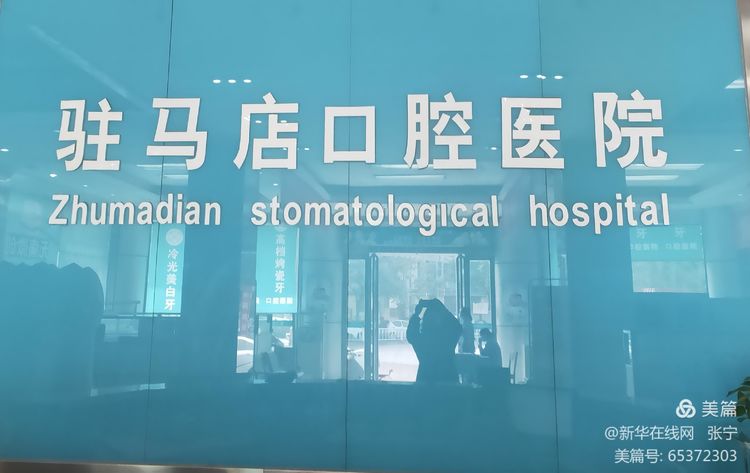
-
关爱健康,从“齿”开始
为普及牙病预防知识,倡导健康生活方式,10月30日,驻马店口腔医院派出多名专家医师,前往亲情树酒店开展口腔义诊活动,活动...更多
2020-10-30 15:48:14

-
天南地北鲁山人领导小组赴许昌考察返乡创业项目
10月30日,天南地北鲁山人领导小组在许昌考察返乡创业项目。目前,在鲁山县返乡创业的优秀企业家有50余人,他们的返乡创业为...更多
2020-10-30 14:45:36
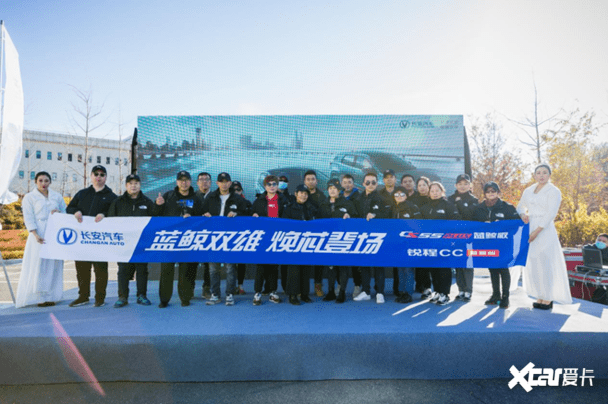
-
劲擎燃动驭“鲸”同行 长安蓝鲸双雄东北区域金...
有一种秋天,叫东北的秋。当南方还抓着夏天尾巴不肯松手时,东北已迎来最绚烂的秋色。10月27日-29日,蓝鲸双雄焕芯登场CS55P...更多
2020-10-30 13:34:44

-
传承中华优秀文化,礼赞伟大中国精神
传承中华优秀文化,礼赞伟大中国精神 (本网山西讯 栗顺平 张志伟) 为了传承中华优秀文化,礼赞伟大中国精神...更多
2020-10-29 23:44:19

-
河北省东光县税务局精心编织“三链条” 护航包...
河北省东光县税务局精心编织三链条 护航包装机械特色产业行稳致远中国新闻在线沧州讯(杜九升 周瑞霞 邓婕)东光税务局的干...更多
2020-10-29 20:29:04
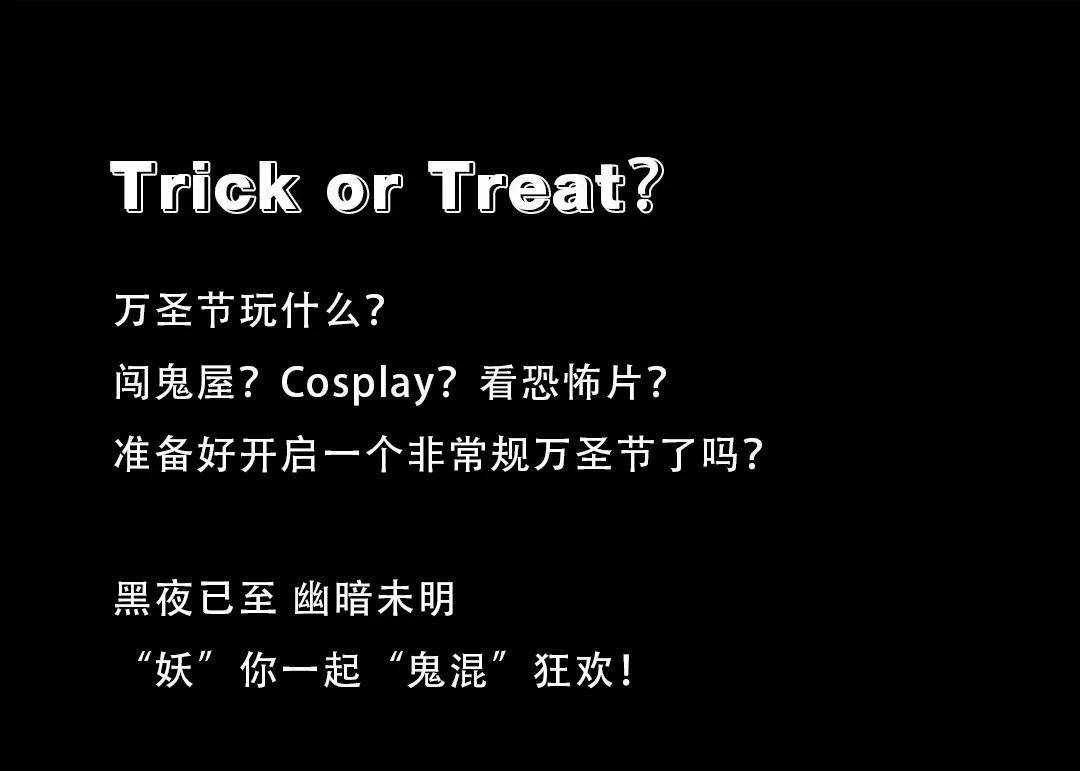
-
【沉浸剧】都市惊悚喜剧《未定惊魂》,万圣前夕...
大型沉浸式互动体验剧《未定惊魂》带你探究民国剧院的爱恨离愁吓到你发笑 笑到你害怕谁是凶手《未定惊魂》讲述一段民国时的...更多
2020-10-29 19:38:08
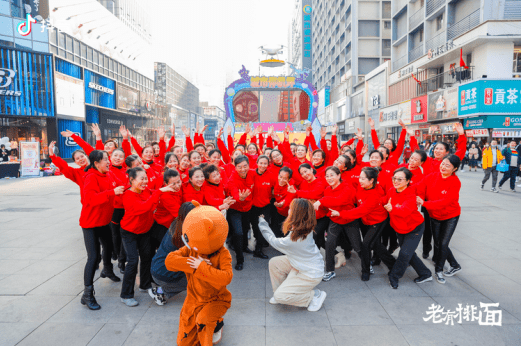
-
多彩重阳尽在抖音,沈阳最潮重阳快闪秀!
2020年10月25日,中国重阳节沈阳和平区太原街步行街迎来了一个神秘组织他们搅乱了老街的平静却收获了赞许和向往的目光他们是...更多
2020-10-29 19:14:26

-
青岛西海岸新举办“乡村振兴 巾帼创业”直播带...
中国新闻在线10月29日青岛电(记者肖文美 通讯员 牛占波 修江敏)10月27日,青岛市西海岸新区工委组织部与区妇联拟...更多
2020-10-29 16:10:50

-
吉林国文医院举办“世界卒中日”大型义诊活动
吉林国文医院举办“世界卒中日”大型义诊活动更多
2020-10-29 16:00:36
编辑推荐



